Noface Land

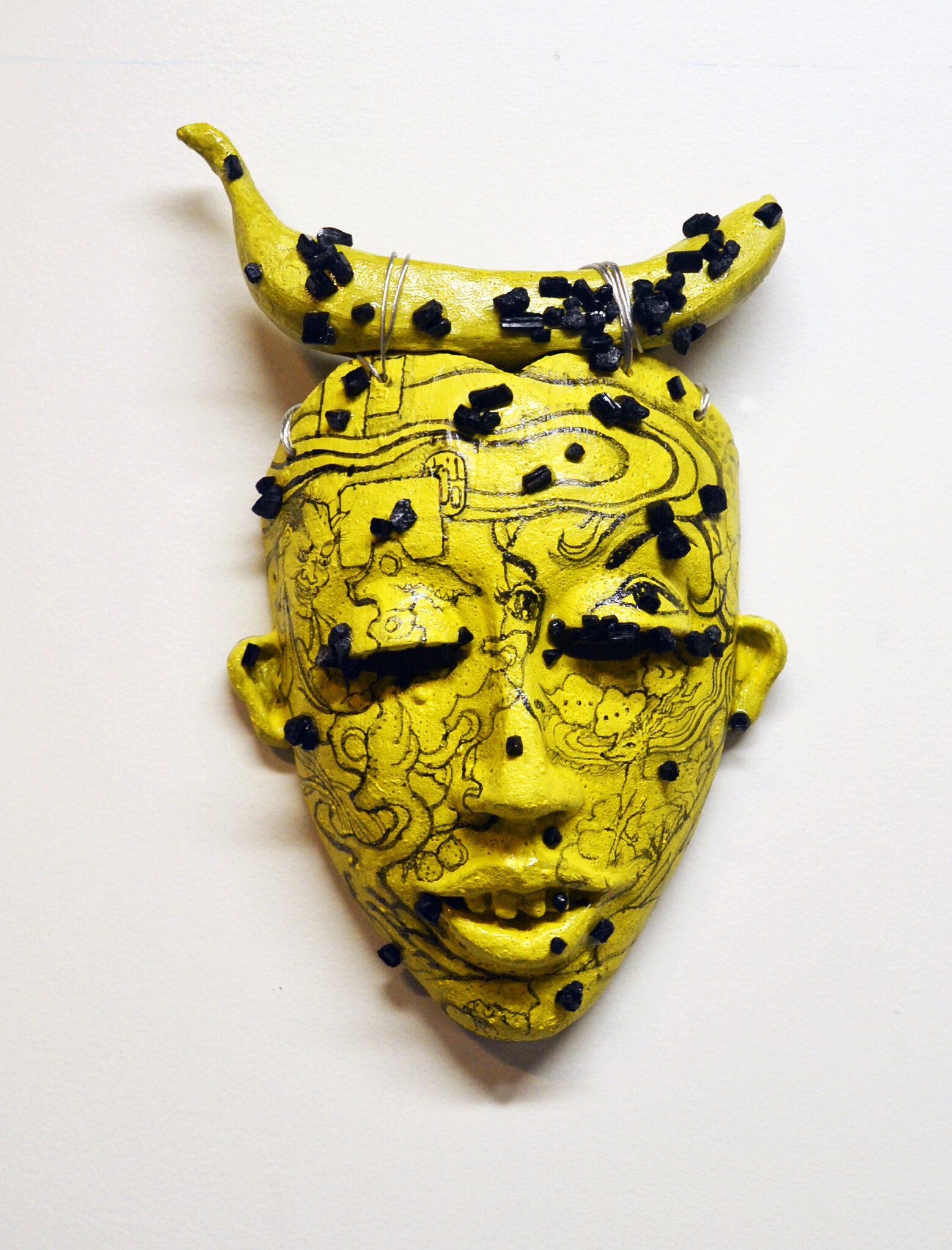
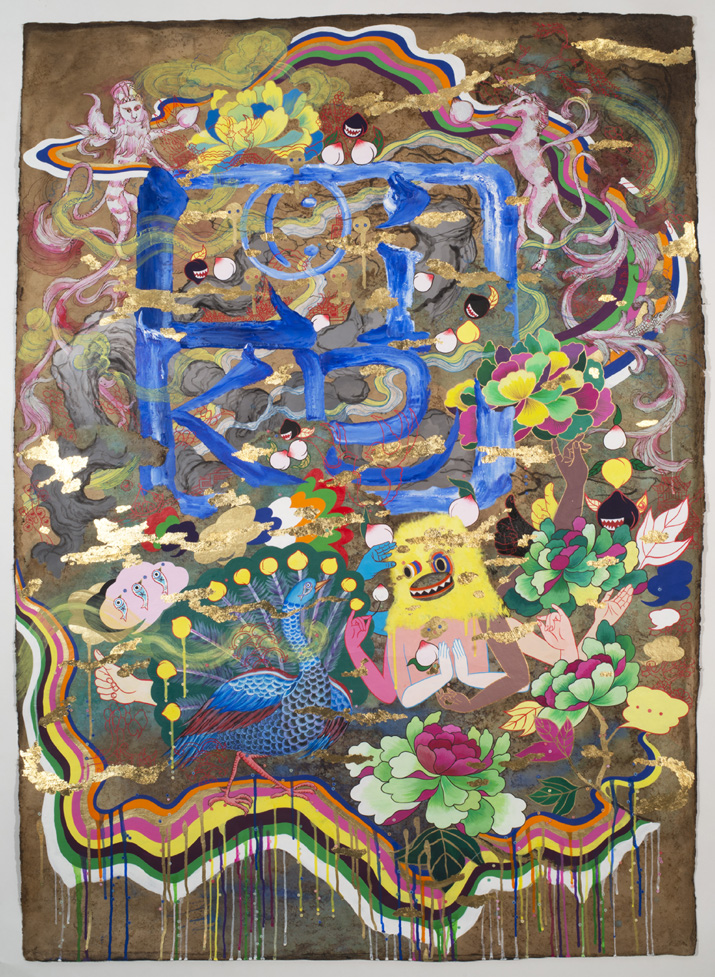
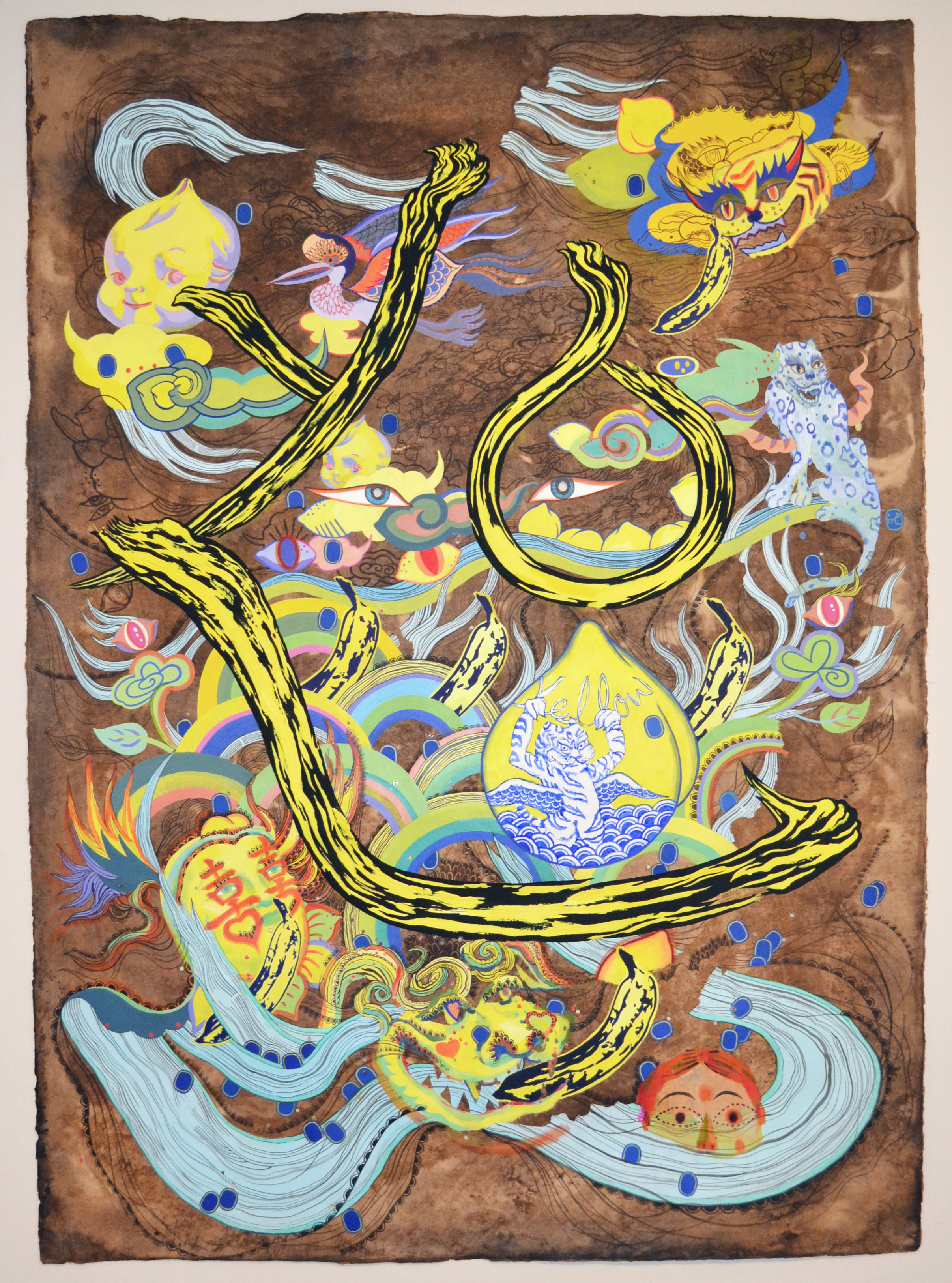
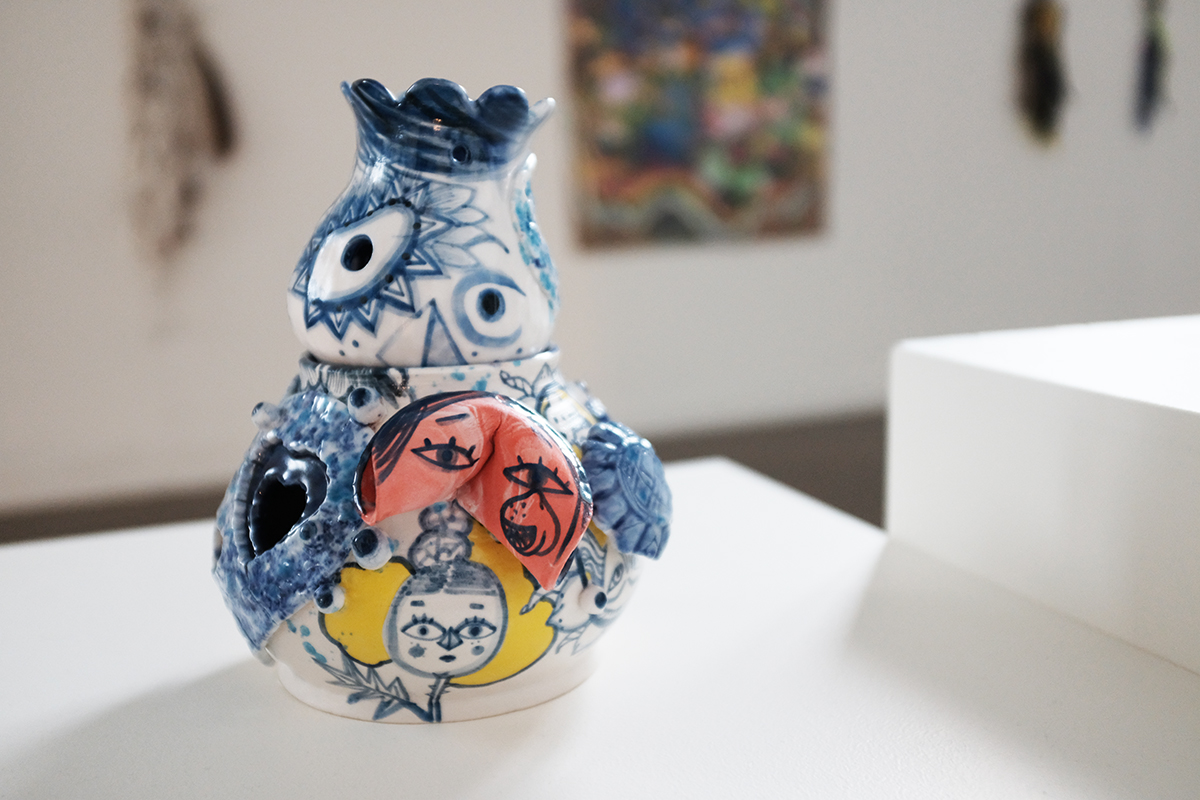
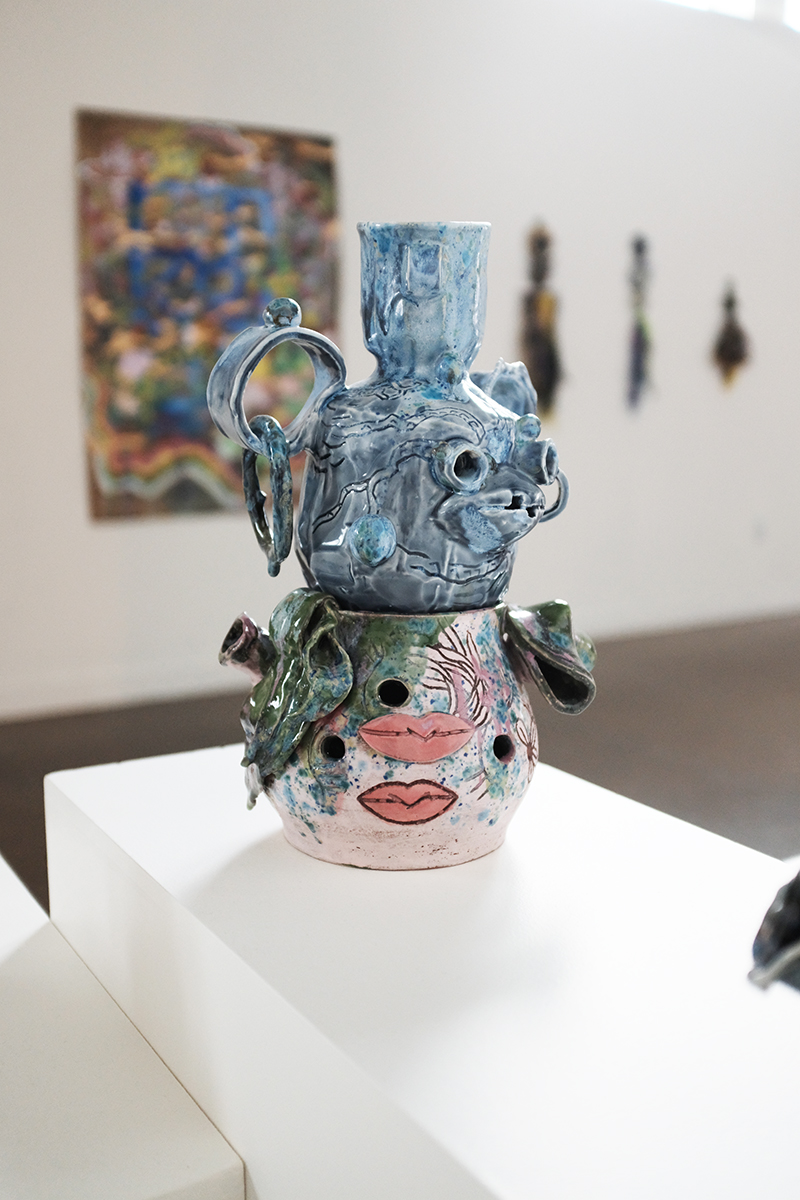
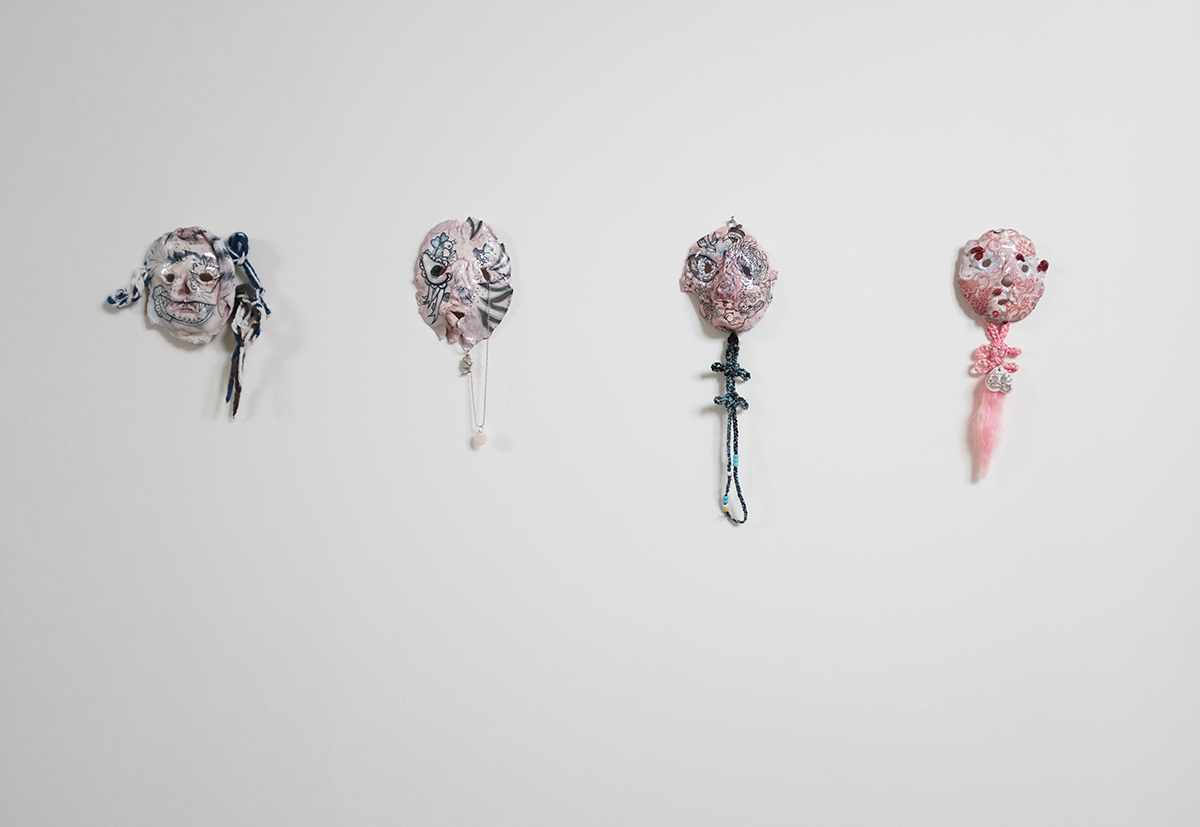
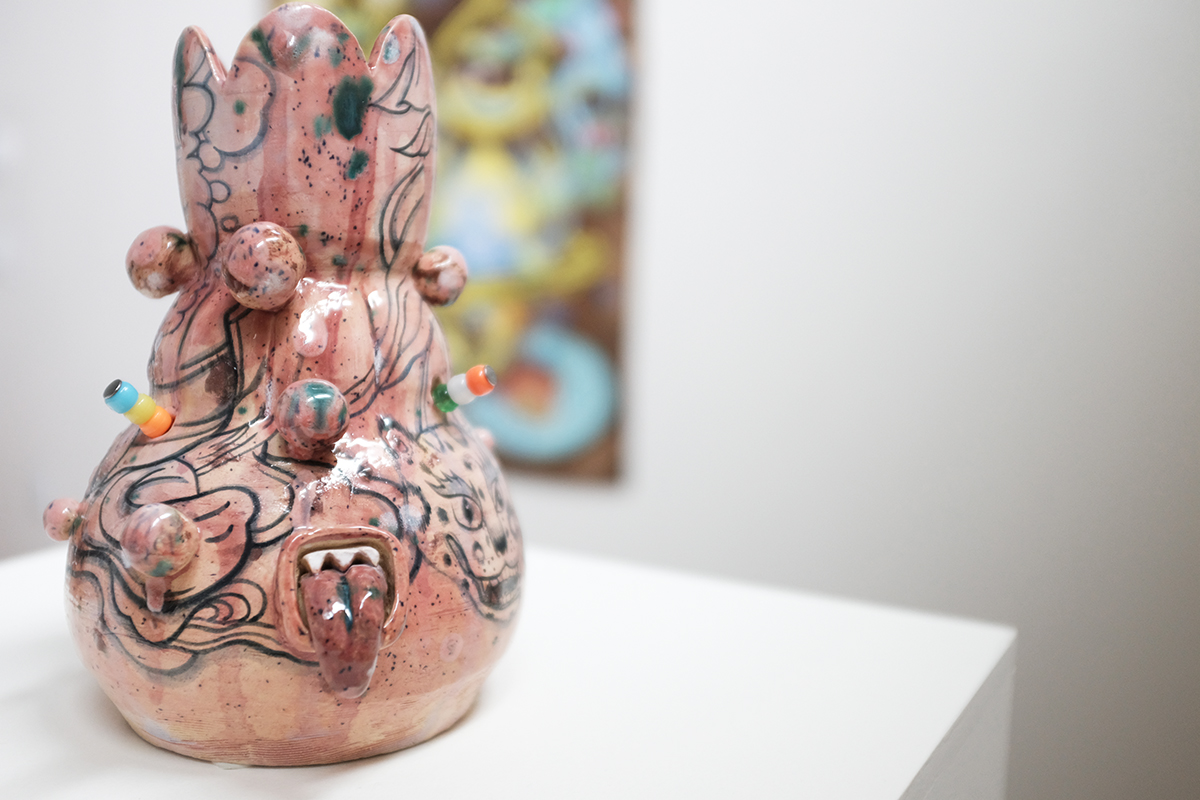
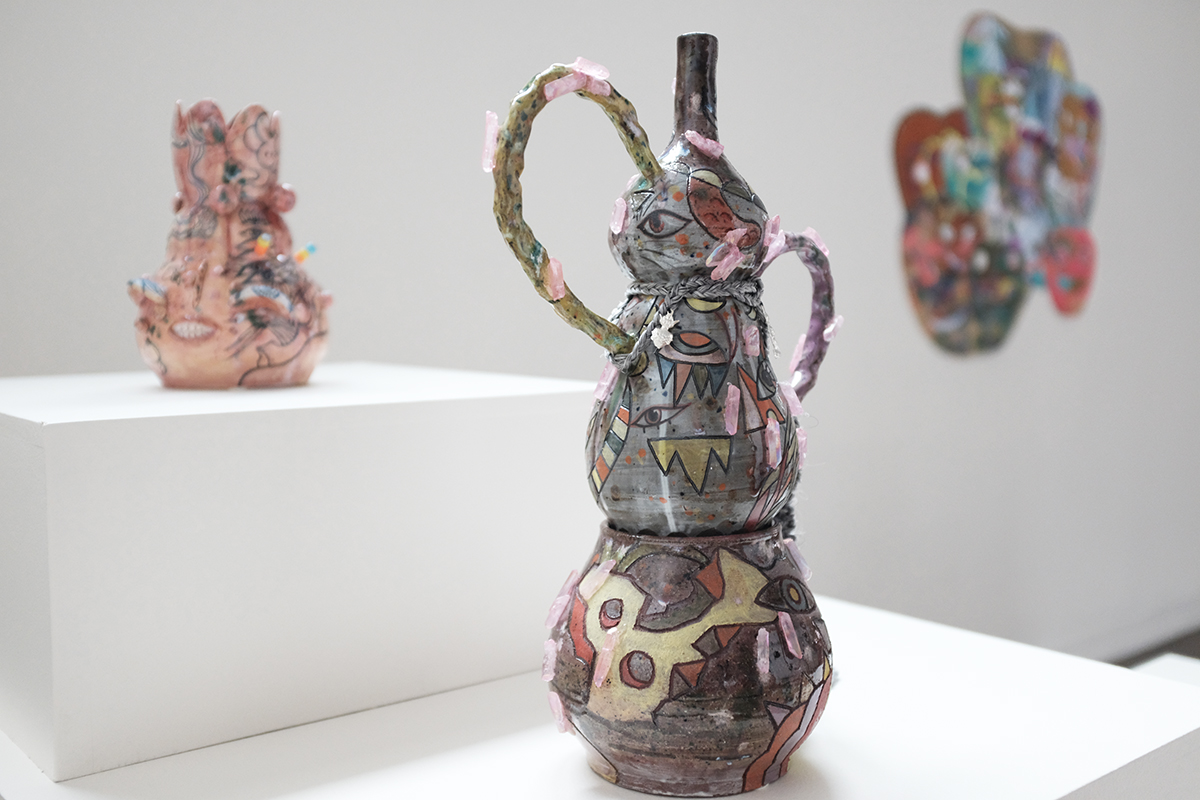
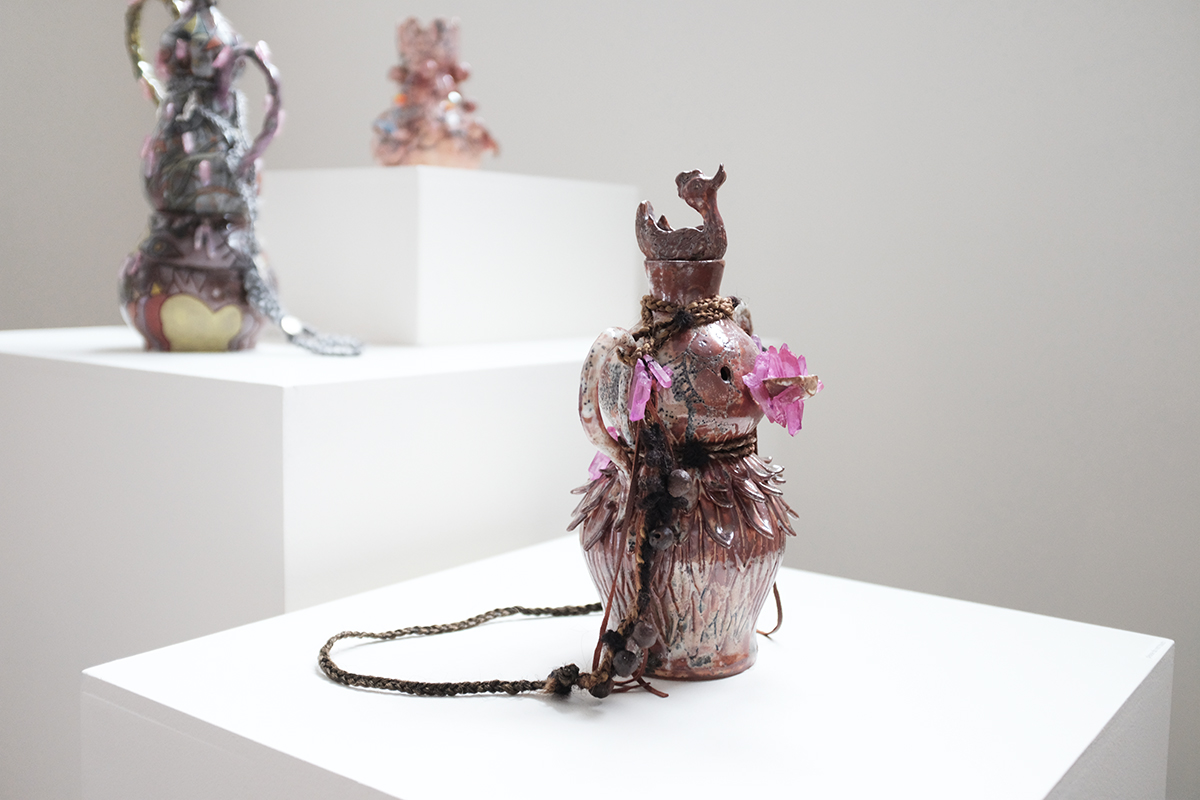
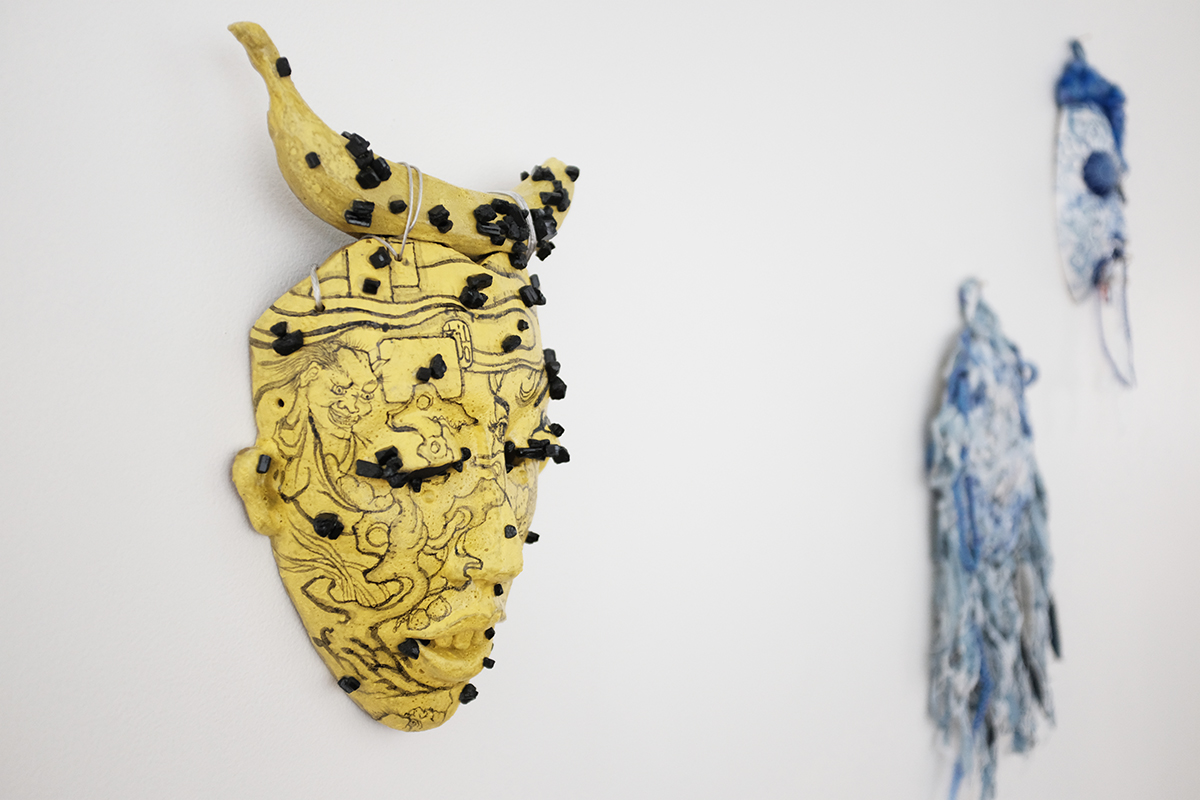
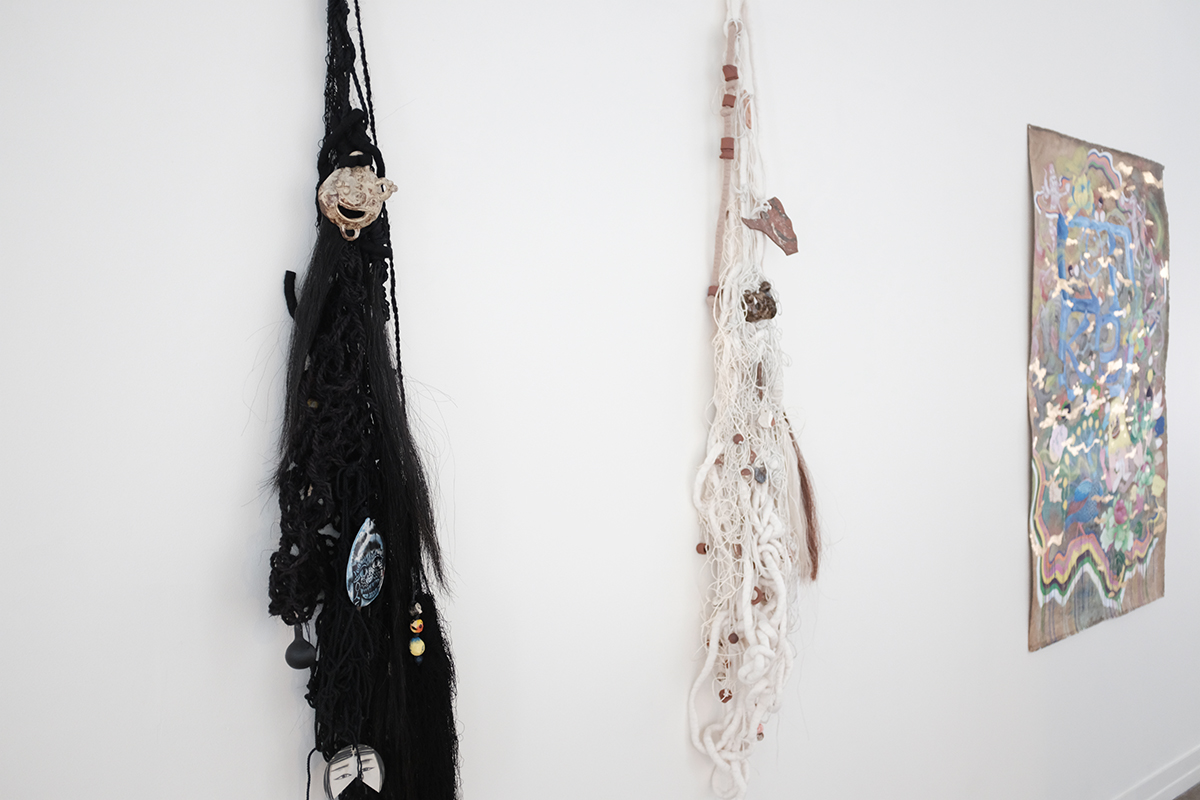
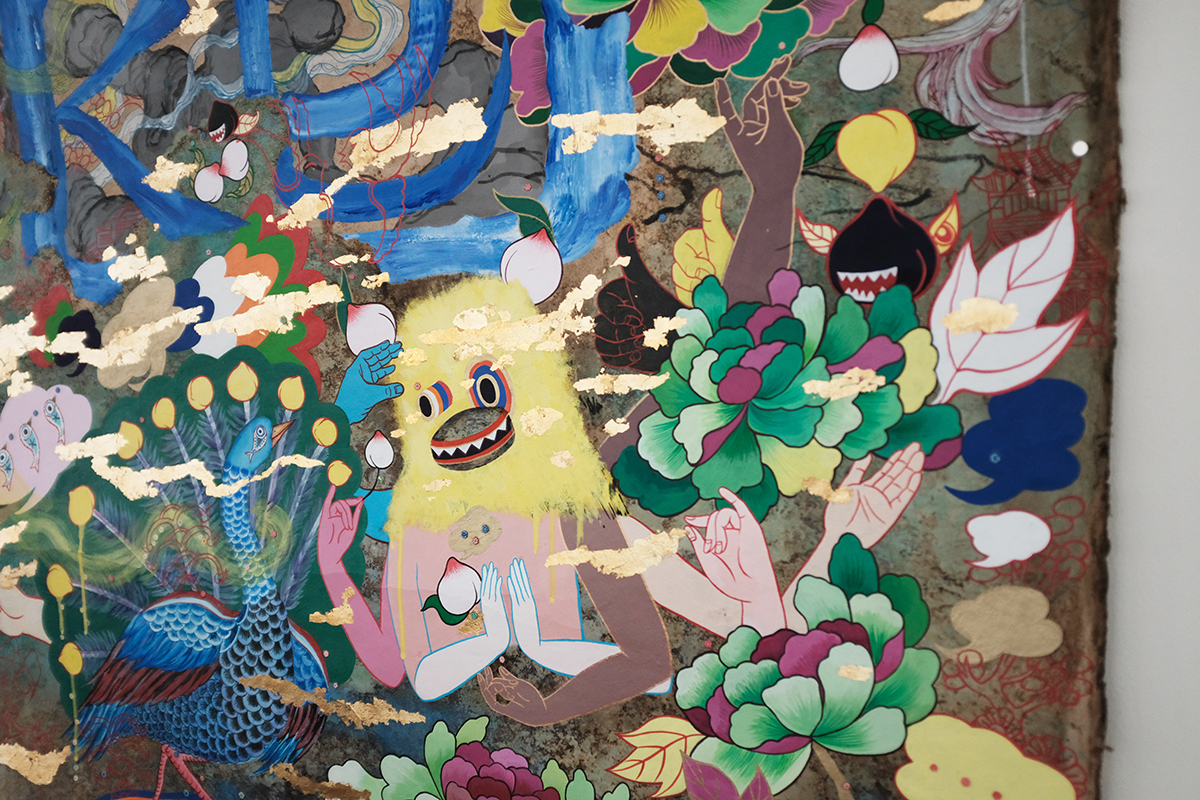
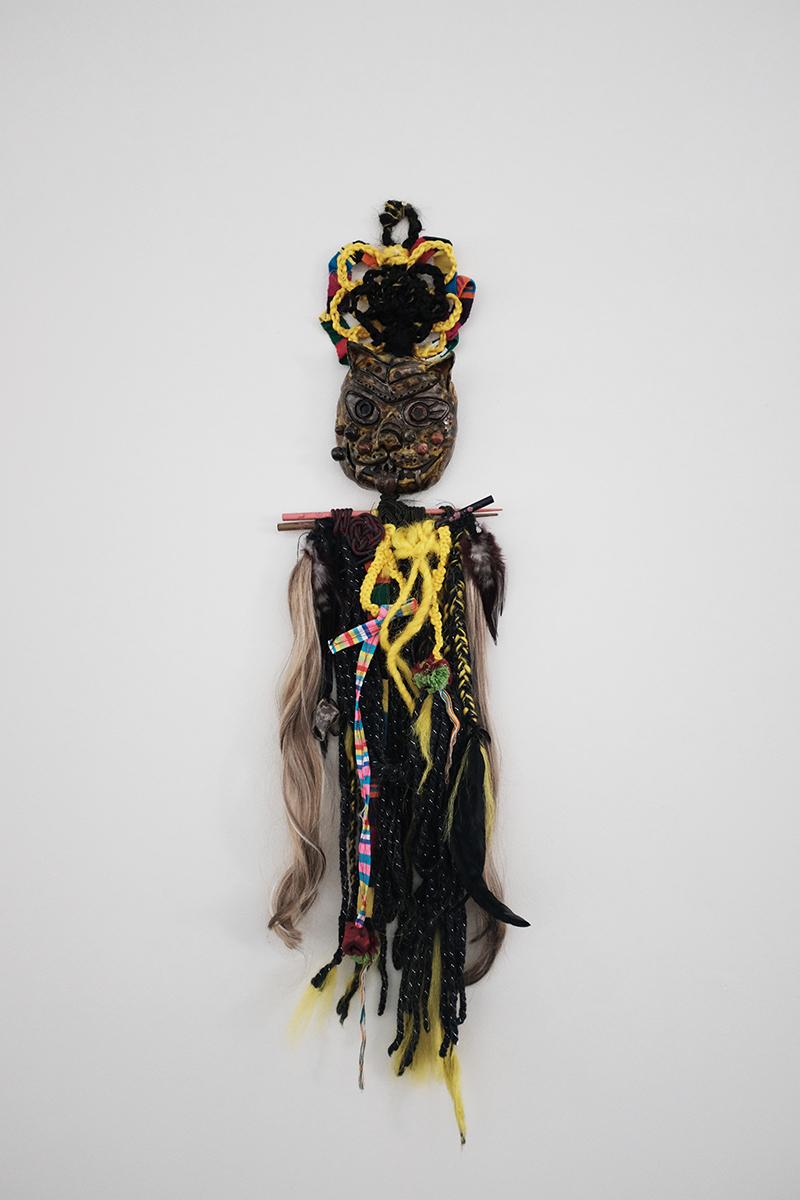
Noface Land
Along with my painting I have been working on a new series of ceramic masks that will be the main focus on this show. Through ceramic masks I am making faces that are in-between past and present, historical and fictional, cultural specific and imaginative. Forms and colors of clay also often distorted and played with in my studio process. Clay becomes a surface to draw upon. Notions of drawing, painting, 2D and 3D often lose their boundaries in these masks. My desire to make unknown yet familiar objects based on people we could encounter daily.
For this series of masks I have invited Atlanta based ceramic sculptor Michelle Laxalt and fiber artist Sonya Yong James to collaborate. For some of these new masks and wall hanging sculptures they have brought together elements that connect with my own practice. The skin that Michelle creates gives me new faces to tattoo with my drawing. My clay beads and shaped ornamental elements will combine with Sonya's fiber structures to create new narratives.
Artists Statement
My images feature cultural landscapes that both look familiar and odd at the same time. I am a cartographer of cultures and an icon maker of fictive worlds made visible in my artwork. I take cues from Eastern and Western art history including Korean temple paintings and Folk Art, as well as colors and designs from popular culture, which range from internet emoticons and icons to fruit stickers and product labels. I tease and change these lexicons so that they are hard to identify, yet stay in a familiar zone. For example, I mix Korean Folk art with Pennsylvania Dutch symbols such as the hex sign, and the Korean Folk Mask “Tal” with cartoon character Homer Simpson or Hopi Kachinas dolls. I purposefully create images whose origins are hard to identify. The world is so interconnected nowadays, how one can even tell where someone or something “comes from” anymore? The seemingly simple question “where are you from?” can be tricky to answer these days. Identity, as a concept linked to geographic location, citizenship, ethnicity, and race, tends to shift and overlap. This strongly affects the imagery of my work. My materials and techniques also contain multiple cultural references. I mostly use Korean mulberry paper “Hanji” as ground and paint and draw with ink and acrylic. Hanji has a long history as a traditional ink painting material in Korea. Acrylic paint, on the other hand, is a newer Western paint material; I relish this combination of old and new together in my work. In addition, I use quilted borders in one painting series as a reference to traditional Korean blankets. Other series feature Asian fan shapes, masks that resemble peaches, work on paper and Hanji mounted on canvases that are ongoing.
Bio
Jiha Moon (b. 1973) is from DaeGu, Korea and lives and works in Atlanta, GA. She received her MFA from the University of Iowa, Iowa City. Her works have been acquired by Asia Society, New York, NY, High Museum of Art, Atlanta, GA, The Mint Museum of Art, Charlotte, NC, Smithsonian Institute, Hirshhorn Museum and Sculpture Garden, Washington, DC, Weatherspoon Museum of Art, Greensboro, NC and The Virginia Museum of Fine Arts, Richmond, VA. She has had solo exhibitions at Museum of Contemporary Art of Georgia, GA, Taubman Museum, Roanoke, VA, the Mint Museum of Art, Charlotte, NC, The Cheekwood Museum of Art, Nashville, TN and Rhodes College, Clough-Hanson Gallery, Memphis, TN and James Gallery of CUNY Graduate Center, New York, NY. She has been included in group shows at Kemper Museum, Kansas City, MI, the Fabric Workshop and Museum, Philadelphia, PA, the Atlanta Contemporary Art Center, Atlanta, GA, Asia Society, New York, NY, The Drawing Center, New York, NY, White Columns, New York, NY, Smith College Museum of Art, Northampton, MA, and the Weatherspoon Museum of Art, Greensboro, NC. She is recipient of prestigious Joan Mitchell foundation’s painter and sculptor’s award for 2011. Her mid-career survey exhibition, “Double Welcome: Most everyone’s mad here” organized by Halsey Institute of Contemporary Art and Taubman Museum has toured more than 10 museum venues around the country until 2018.
Moon gestural paintings, mixed media, ceramic sculpture and installation explore fluid identities and the global movement of people and their cultures. She says “I am a cartographer of cultures and an icon maker in my lucid worlds.” She is taking cues from wide ranges of history of Eastern and Western art, colors and designs from popular culture, Korean temple paintings and folk art, internet emoticons and icons, fruit stickers and labels of products from all over the place. She often teases and changes these lexicons so that they are hard to identify, yet stay in a familiar zone.
